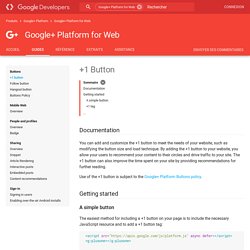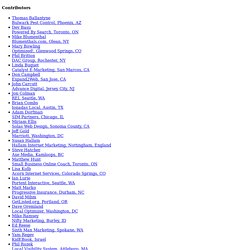

Tutoriel : configurer les paramètres d’URL dans Google Webmaster Tools. Par Olivier Duffez, Mardi 14 août 2012 Sur les sites dynamiques, on trouve parfois/souvent des paramètres passés dans les URL (derrière le signe ?).

Ils peuvent servir à configurer le contenu à afficher ou à gérer des options pour liées à l'internaute. Mais ils peuvent générer des contenus dupliqués (en donnant accès au même contenu via des URL différentes). Lisez ce tutoriel pour apprendre comment paramétrer cet outil complet intégré dans Google Webmaster Tools. Remarque : la 1ère version de ce tutoriel date de septembre 2009, quand Google a sorti cet outil pour la première fois. Avant de commencer, si vous n'êtes pas à l'aise avec la notion de duplicate content (DC), lisez mon tutoriel sur les contenus dupliqués (incluant les solutions pour améliorer votre référencement naturel). Quels sites sont concernés ? Certains sites dynamiques Si vous avez un site dynamique, il est fort probable que cela vous concerne, sauf si vous avez déjà pris les mesures nécessaires. Mise en place pas à pas... Guide du créateur YouTube. Bouton +1. Documentation You can add and customize the +1 button to meet the needs of your website, such as modifying the button size and load technique.

By adding the +1 button to your website, you allow your users to recommend your content to their circles and drive traffic to your site. The +1 button can also improve the time spent on your site by providing recommendations for further reading. Use of the +1 button is subject to the Google+ Platform Buttons policy. Getting started A simple button The easiest method for including a +1 button on your page is to include the necessary JavaScript resource and to add a +1 button tag: The script must be loaded using the HTTPS protocol and can be included from any point on the page without restriction. . +1 tag To render a simple +1 tag: You can also use a HTML5-valid +1 tag by setting the class attribute to g-plusone, and prefixing any button attributes with data-.
By default, the included script traverses the DOM and renders +1 tags as buttons. Configuration. Local SEO Best Practices for Ranking in Google Places. Contributors More Helpful than Last Year* Velocity of Native Google Places Reviews (+31.6)Quantity of Third-Party Traditional Reviews (+23.7)NAP in hCard / Schema.org (+22.82)Age of Place Page (+20.18)Product/Service Keywords in Reviews (+17.55)* in comparison to Blended answers from last year; degree of change normalized for increased number of factors in 2012 Less Helpful than Last Year* Product/Service Keywords in Anchor Text of Inbound Links to Domain (-22.82)Location Keywords in Anchor Text of Inbound Links to Domain (-21.06)Diversity of Inbound Links to Places Landing Page URL (-19.31)Location Keywords in Anchor Text of Inbound Links to Places Landing Page URL (-16.67)Location Keywords in Place Page Custom Attributes (15.8)* in comparison to Blended answers from last year; degree of change normalized for increased number of factors in 2012 Volume 5 | Published June 11, 2012 SKIP TO RESULTS » Introduction The Survey Discussion David MihmPortland, Oregon June 11 2012 Place Page Factors.
